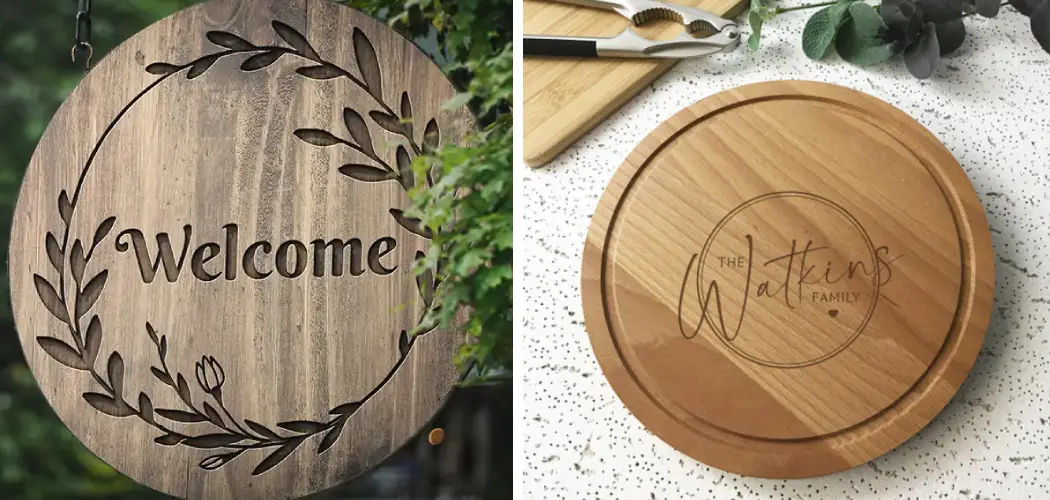Wood engraving is an age-old art form that has a unique beauty and character. It can add a special touch to any home décor or gift idea. Whether you’re looking to create something personal or simply find an intriguing way to decorate, wood engraving is an excellent option. However, making a wood engraving that isn’t quite as eye-catching as you may have hoped is easy.
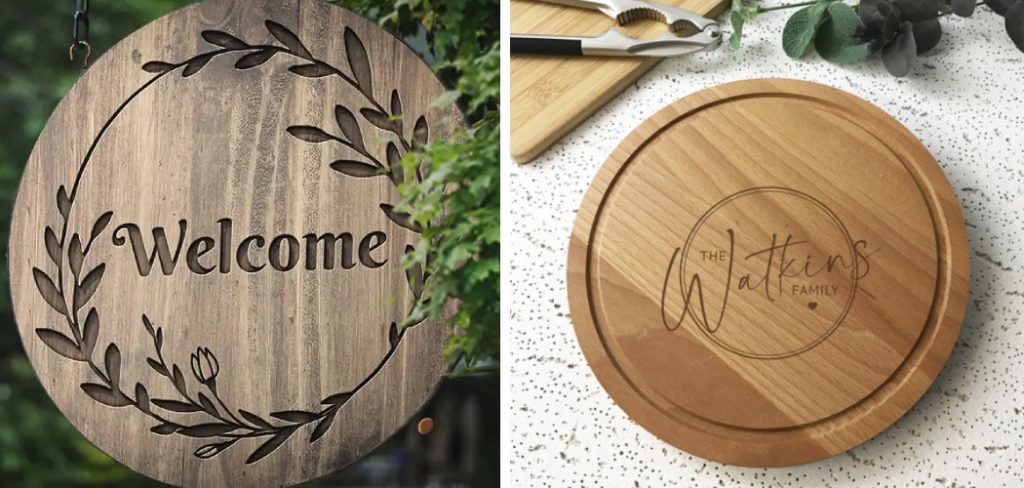
Wood engraving can be used to create beautiful and intricate designs that will stand out against their surroundings. The technique is ideal for making a bold statement in furniture, interior design, signage, and other projects. Wood engravings look more polished than plain wood carvings due to the higher level of detail that can be achieved. This makes them ideal for adding an artistic touch to a variety of woodworking projects. In this blog post, You will learn in detail how to make wood engraving stand out.
Tools You Will Need
- Wood engraving tool
- Stencils
- Sandpaper
- Fine grit sandpaper or emery paper
- Wood finish or varnish
- Craft knife
- Brush for applying wood finish
- Ruler and tape measure
- Pencil, marker, or chalk for marking patterns
- Drills and drill bits (optional)
Step-by-step Instructions for How to Make Wood Engraving Stand Out
Step 1: Inspect the Wood
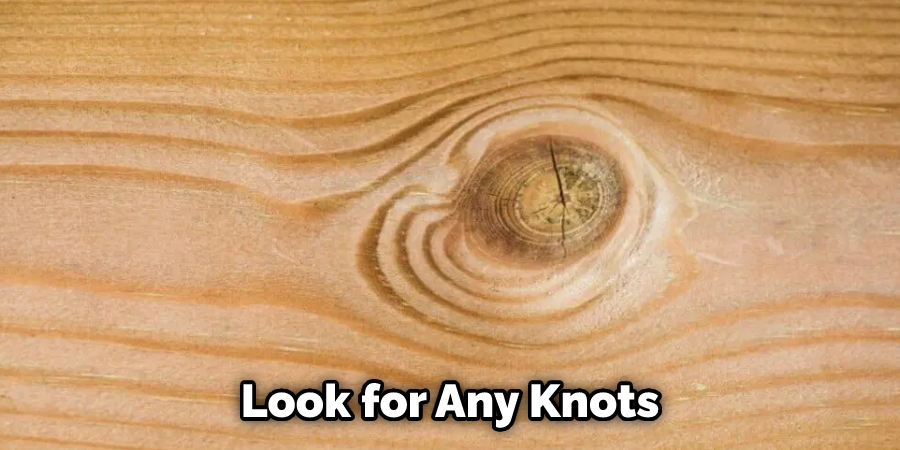
Before starting any engraving, be sure to inspect the wood carefully. Look for any knots, cracks, or other imperfections that could affect the quality of your final product. Ensure the wood is in good condition and will accept the type of cutting tool you plan to use.
Step 2: Choose a Design
There are numerous designs to choose from when engraving wood. Try to envision the finished product and pick a design that will best showcase your work. You can use freehand drawing techniques or find clip art online.
Step 3: Prepare Your Engraving Tool
There are several options when it comes to engraving tools, such as chisels, dremels, and lasers. Choose the tool that best fits your needs and ensure it is properly sharpened and clean before beginning. After you have chosen a design, mark out the details of it on the wood with a marker or chisel. Use a ruler to ensure accuracy in your cuts.
Step 4: Start Engraving
Begin your engraving by slowly and carefully following the lines of your design. Use short and light strokes to create an even cut in the wood. As you are engraving, feel free to adjust the depth of your tool or the angle of the blade to create more intricate details in your design.
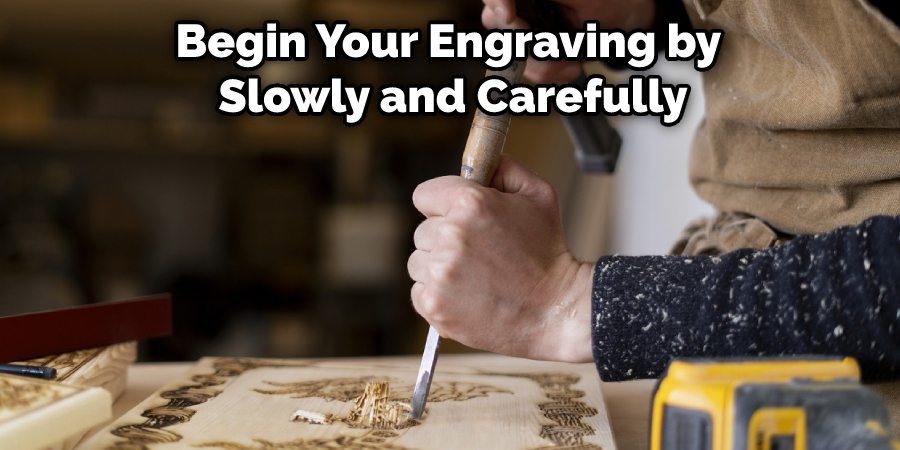
Step 5: Sand and Smooth Out the Edges
Once your engraving is finished, use fine-grit sandpaper to smooth out any rough edges or imperfections. If desired, you can apply stain or other finishing touches to make your design stand out even more. To ensure the longevity of your engraving, seal it with a layer of protective finish. This will help keep dirt and moisture from damaging or discoloring the wood over time.
Once you have finished your wood engraving, take a step back and admire the beauty of your work. You can proudly display it in your home or give it as a gift to someone special. Making wood engravings is an incredibly satisfying way to express yourself and create something unique.
Safety Tips for How to Make Wood Engraving Stand Out
- Ensure you have the necessary safety equipment, such as goggles, a dust mask, and gloves to protect your eyes, face, and hands from the sawdust that will be generated when engraving wood.
- Wear appropriate clothing for woodworking – long-sleeved shirts, trousers, and closed-toe shoes. This is to prevent splinters or sawdust from getting into your skin while handling the wood.
- Ensure the work surface is clear and free of any obstacles that may hinder movement or cause harm to yourself or someone else in the area.
- Keep a fire extinguisher nearby in case of any sparks are generated during engraving operations.
- Only use sharp cutting tools, such as burrs and engraving bits, to ensure a clean finish. Avoid using chisels and knives as these may damage the wood or cause injury.
- Make sure your hands are far away from the cutter when switching on the machine, and be mindful of where you are positioning your fingers while engraving.
- Allow the wood to cool down before handling it, as friction generated during engraving can cause high temperatures on some materials. This can lead to hazardous burns if touched without proper protection or safety equipment in place.
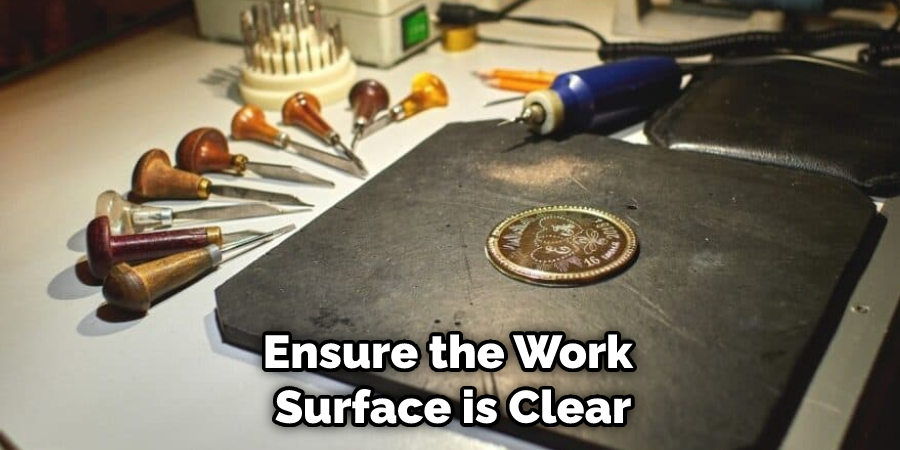
By following these safety tips, you will surely have a smooth and successful wood engraving session for yourself, your material, and anyone in the vicinity.
What Techniques Can Be Used to Make an Image Appear More 3d?
When making wood engraving stand out, 3-dimensional techniques can be used to add depth and realism to the image. Some of these techniques include:
- Creating Shadows: adding shadows to an engraved piece will make it appear more three-dimensional and give the illusion of greater depth. This is typically done by etching deeper into the wood in certain places to create a darker, shadowed look.
- Using Shading: Adding subtle gradients of light and dark tones can make an image more 3-dimensional. This is achieved by overlapping two different layers of engraving on top of each other or by lightly etching one layer over another.
- Adding Highlights: adding sharp or bright highlights to the wood engraving will draw the eye and create a sense of realism. Highlights can be added with light etching on top of the original engraving or by sanding down areas to bring out nature grain patterns in the wood.
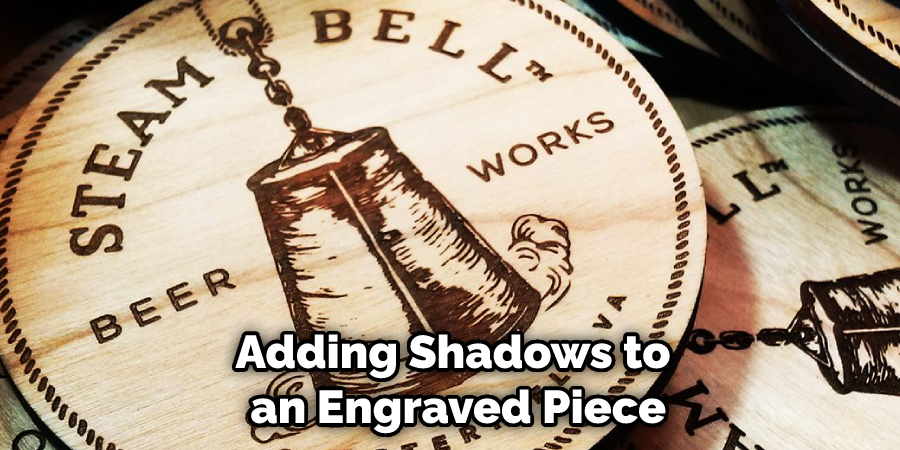
By incorporating these techniques, you can make your wood engraving stand out and appear more 3-dimensional.
What Are the Steps to Take in Order to Avoid Making Mistakes During the Engraving Process?
When it comes to making the wood engraving stand out, the key is to avoid making mistakes. Here are some steps that you can take in order to reduce the risk of errors:
- Prepare your workspace and select the right tool for carving – Make sure your workspace is kept clean, with no dust or any other particles. Select the right tool for your carving according to the type of wood you’re working with.
- Make sure you have a strong, steady hand when doing wood engraving – A steady hand is important to ensure that each line or detail of your design is perfectly carved. Take your time and practice if needed.
- Avoid going too deep with your cuts – Avoid making too deep of a cut into the wood, as this can make it difficult to get rid of any unwanted lines or details.
- Don’t rush – Take your time and take breaks if necessary to ensure the design is perfect before you finish the engraving.
By following these steps, you should be able to create beautiful wood engravings that stand out and make a statement. Finally, remember to enjoy the process and have fun! With patience and practice, you will become an expert in wood engraving in no time.
How Can the Life of a Wood Engraving Be Extended?
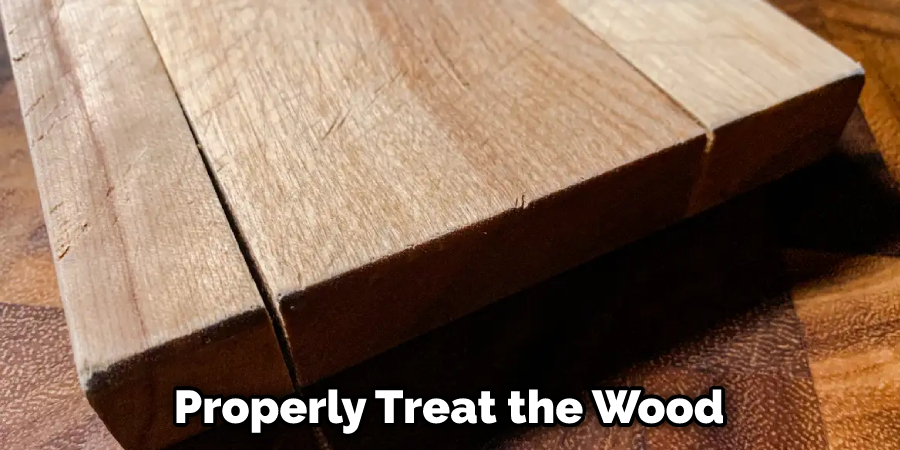
When it comes to making a wood engraving stand out and last longer, there are a few steps you can take. To start, it is important to properly treat the wood before any type of engraving is done. This means cleaning it with an appropriate solvent, such as mineral spirits or denatured alcohol, and then sanding the surface to a smooth finish. The smoother the wood, the better it will look once an engraving is applied.
Once the wood is prepared and ready for engraving, you need to choose your tools and techniques wisely. A router or chisel can be used in conjunction with a mallet or hammer to carve out intricate lines and shapes. It is important to practice scrap wood before moving on the piece you will engrave. In order to achieve a deeper, more defined look, you can use multiple passes with increasing pressure each time.
Are There Special Considerations When Creating a Complex Design on Wood?
When working with wood, it’s important to be aware of some of the special considerations when creating a complex design. Wood engraving is often done on softer woods such as pine, cedar, and basswood, so the grain of the wood can play a role in how your design looks once completed. For example, softwoods tend to absorb more of the ink, so you may need to use a thicker layer of paint or stain when working with these woods. Additionally, softwoods can be easily scratched and nicked, so you’ll want to take extra care when handling your engraving tools.
When creating a more intricate design on wood, it’s important to consider the types of finish you’ll use to protect and enhance your engraving. A clear protective finish is often recommended, as it can help to accentuate the design and give it a richer, more vibrant look. Additionally, using a light-colored wood stain can highlight the wood’s natural beauty while still showcasing your design. Finally, if you’re looking to make your engraving stand out even more, consider adding a bright color, such as red or yellow, to the design.
What Are the Benefits of Using a Laser Engraver for Wooden Products?
Laser engraving on wood is a great way to make your products stand out. Laser engravers easily produce precise and intricate designs, allowing you to create custom, high-quality pieces. Laser engraving can be used for a variety of different wooden products, including furniture, kitchenware, decorative boxes, and more. The benefits of using a laser engraver for wood are numerous.
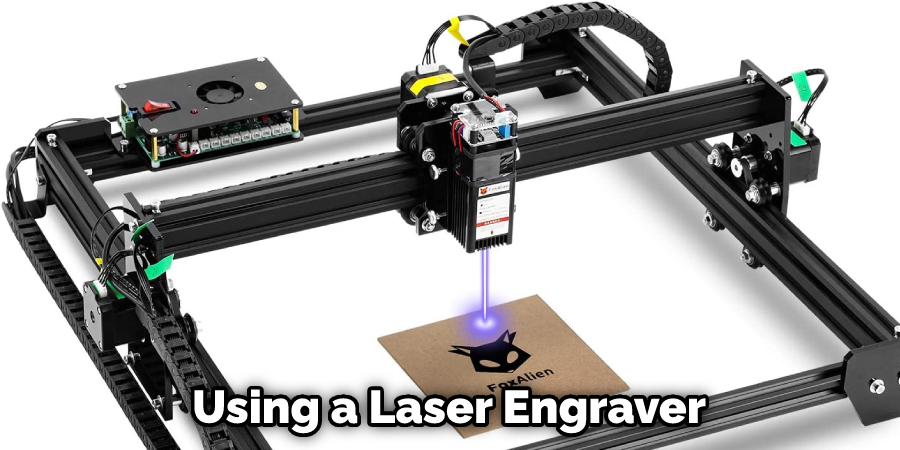
First and foremost, laser engraving is highly accurate and detailed. The precision of the engraved image allows you to create intricate designs that have a high-end look. As the beam passes over each section of the surface, it will leave a uniform mark in its wake resulting in an even and consistent finish. Laser engravers also produce incredibly clean cuts, so no matter how complex the design is, you can be sure that it will come out looking perfect every time.
How Much Will It Cost to Make Wood Engraving Stand Out?
Having a beautiful wood engraving is an art form that can make any gift, décor piece, or even furniture stand out. However, the cost of such a project varies depending on the type of wood you choose and the size of your project. Basic wood engraving can start as low as $5 per inch for simple designs. The cost can increase to $25 per inch or more for more intricate designs or larger projects. If you are looking for a unique piece of artwork with custom engraving, expect to pay even more.
In addition to the engraving cost, additional fees may apply if you need help designing your project, tools, and materials, or professional finishing. Wood engraving can be a great way to add a unique personal touch to any item or room. Researching materials, costs, and design options will help ensure that you create a beautiful piece of art that stands out from the rest.
Conclusion
There are a few disadvantages to consider when it comes to wood engraving. Wood engraving can be time-consuming and tedious as the lines must be carefully and precisely etched into the wood. It requires a lot of patience and attention to detail, or else mistakes can be made that ruin the entire work. Additionally, more intricate designs are often impossible because of time constraints. It also requires sharp cutting tools and a steady hand to achieve the desired outcome.
In conclusion, wood engraving is a great way to create a personalized and unique gift or decoration. Using the right tools, techniques, and materials can help you make your wood engravings stand out. Make sure to practice different techniques on scrap pieces of wood before working on the actual project, as this will help you become more familiar with the process and give you time to experiment with different ideas. I hope reading this post has helped you learn how to make wood engraving stand out. Make sure the safety precautions are carried out in the order listed.

